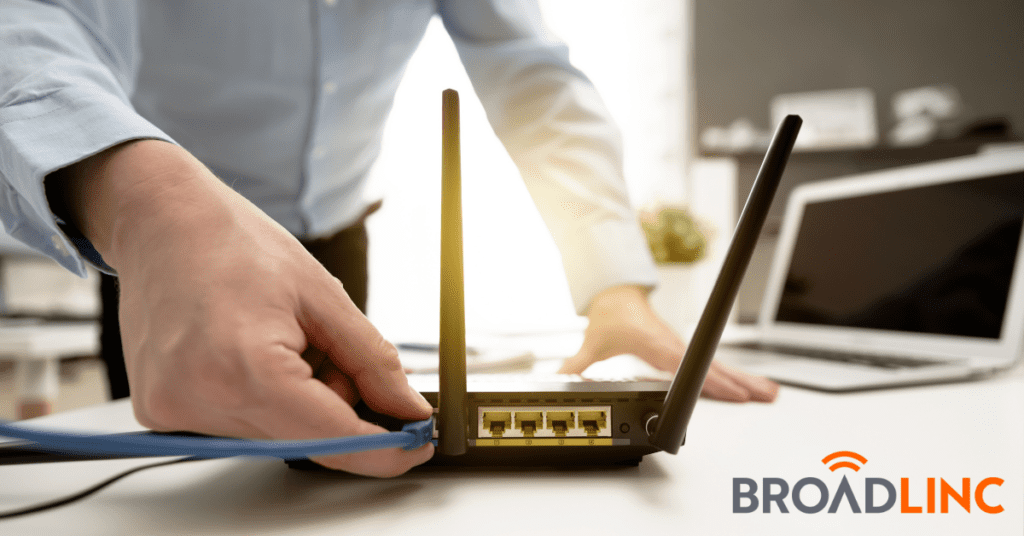
Why is My Ethernet Slower than Wi-Fi?
Direct ethernet connection is faster than Wi-Fi. The reason is that an Ethernet cable directly connects your router to your computer using the Internet. A high-speed Ethernet cable lets you have a speedy, consistent connection.
Wi-Fi uses radio waves which are slower and less reliable. With Wi-Fi, there are many instances where interference and distance can slow down the connection.
However, if you are experiencing slower internet with a wired connection than with a Wi-Fi connection, there are a handful of things you can quickly troubleshoot. We’ll cover them in this article.
Wi-Fi vs. Wired Connection Speeds
Your Internet speeds can depend on whether you’re using a wired or wireless connection. Some factors that can determine your Internet speeds include:
Latency involves the time it takes for your router to respond to a request you’ve made. Slower Internet could be due to high latency, and Wi-Fi tends to have slower latency than ethernet. This latency is increased if you’re far away from the Wi-Fi signal or if there’s another obstruction.
However, the difference between an ethernet connection and a Wi-Fi connection is usually small unless you’re performing time-sensitive actions such as gaming.
Data transfer speeds greatly depend on your Wi-Fi connection and what type of ethernet cable you have. For example, most modern Wi-Fi connection speeds max at 1.73 GBPS. This speed can depend on the distance and other factors.
Meanwhile, there are several types of ethernet cables, divided into categories. For example, a cat6 cable goes up to 1GBPS, so theoretically, your Wi-Fi connection could be faster. However, a cable does deliver more consistent speeds. Meanwhile, a cat8 cable can go up to 4oGBPS.
Your wireless network could slow if there are walls, objects, or fluorescent lights between your device and your network adapter. In addition, a greater distance could cause slower speeds. To reduce interference, move your device closer to the router. If you cannot do that, you can also purchase extender devices.
We should note that an ethernet connection can have interference as well. If you purchase a non-shielded cable, other cables can interfere with the connection, mainly if there’s damage to the cable jacket. So either buy a shielded cable or separate it from other wires.
Potential Causes of a Slow Ethernet Connection
Now that you know some of the differences between ethernet and Wi-Fi, let’s look at why your ethernet connection could be slower than Wi-Fi.
As mentioned earlier, you could have an older cable with a lower data transfer cap. For example, you could have a Cat3 cable, limiting your speed to only 10MBPS, a rate that may have worked back in the day but is inexcusable now.
Also, your cable could be damaged or not connected properly. Troubleshoot your cable, and consider buying another one. Cables tend to be affordable, with many longer cat8 cables going for under $20.
In addition, length could cause slower connection speeds, but this one is unlikely. For example, most cables should be less than 328 feet. Most people will not need a cable that long, so it should not affect you.
One common way to fix any troubleshooting problem is to update your drivers. You can update most drivers by selecting the update option on your PC and all the optional updates.
Some devices, such as consoles, may have settings that limit their Internet speeds. Check your console settings and see if something is selected that could restrict speeds.
There may also be an issue with your network interface card (NIC), which is a chap that lets you connect to the Internet. Most NIC problems are fixable by resetting the card.
On Windows, go to Settings < Network and Internet < Change Adapter Options. Find your Ethernet adapter, right-click on it, and click “disable.” Give it a few seconds, then click “enable.”
If that doesn’t work, make sure there are no limiters on your NIC. Right-click on your adapter again, select Properties, then Configure. Make your way to Advanced, then Speed & Duplex. Select “Auto-negotiation.”
It should work now. If there are still Internet issues, go to device manager, select your driver, and reinstall it. If there are still issues, it could be a hardware problem.
It could be a virus if you’ve ruled out software or hardware issues. Viruses and malware affect your computer in many ways, one of them slowing down your Internet speeds. These effects include making your ethernet slower than Wi-Fi.
Use your virus scan software or Malware Bytes to see if it’s a virus. Using several scanners can help you know if you have any viruses. Then, you can eliminate them, and hopefully, that will help to speed up your connection.
The hardware age could be another reason you have low connection speeds. For example, it could offer reduced speeds if you have not updated your router in over five years. Contact your ISP to see if you could upgrade.
The same applies to your computer itself. Your NIC could use an upgrade, either by replacing your computer altogether or simply by replacing it with a new card. Looking at your devices’ specs can also help determine if you need an upgrade.
In addition, your router may not be configured correctly. Configuring your router typically involves entering your IP address into the browser, logging in, and looking at the settings. Consult your ISP for more information, as all routers are different.

Troubleshooting Your Connection
If you’re unsure how to troubleshoot your slow Internet connection, this section will help you. Here’s how you can troubleshoot your connection.
You can do a speed test through many websites, including Google itself. For example, Googling “Speed test” gives you a prompt for you to test your speeds.
Do a speed test with multiple devices and cables, as this can help to rule out whether or not it’s a cable or device issue. If they all have more or less the same speeds, you should move on to the next step.
In some cases, switching ports could be a solution, as one port could be defective, or there are times when a new port can improve speeds. Compare speeds before and after you change ports, as this can help you move on to the next step.
Once again, run a scan using your antivirus or anti-malware program. A virus or malware program could throttle speeds, and eliminating them could restore speeds to normal. As mentioned, use different programs; sometimes, a virus could be undetectable by one scanner.
A virtual private network (VPN) offers complete privacy by masking your IP. However, it can chug your Internet speed. After all, a VPN connects you to other countries, and the distance makes even faster speeds go down. When troubleshooting, be sure to turn it off. Sometimes, your low speeds could be due to you leaving on your VPN.
View your settings. Sometimes, an update or another incident could have changed them. So experiment with the settings a little bit, and see if doing that changes your speed. Sometimes, it takes just one toggle for your speeds to be back to normal.
Once again, you should constantly update your drivers. Windows Update automatically makes it more accessible, and you should also check to see if you’re installing optional updates.
However, there are driver updates your auto-update could have missed. To make sure, go to Device Manager—Right-click on the driver you want to be updated, and select Update. If there are any updates, you can apply them to your drivers. However, it will tell you if you’ve updated to the latest version.
Your router has firmware that also needs to be updated. Once again, enter your IP address into the address bar and log into your router. On the settings, you should see an option to update it. Some routers update automatically, but others may require a manual update. Every router is different, so consult your ISP (internet service provider).
Finally, if you do not know why you have slow Internet, it could be an ISP problem. Sometimes, a slow Internet connection could be due to issues outside your home or a router’s defect. Contacting your ISP can help you figure out why your wired connection is slower, and you may even be able to upgrade your Internet due to the inconvenience.
We hope this article helped you solve your wired Internet connection issue. A slower Internet connection in ethernet cables could have several reasons, and by figuring out why, you can have fast speeds again. You can also check our other articles if you have any other Internet issues.

Written By Brittany Derderian, Director of Marketing
Brittany Derderian is the Director of Marketing at Broadlinc internet services. Her responsibilities include leading the company’s marketing efforts, overseeing and growing the marketing department, consistently identifying revenue opportunities within our established client base and managing consistent growth by securing new accounts, collaborating with the leadership team to uncover insights and strategies to develop and implement marketing and branding strategies for new and existing products, and spearheading the strategic and tactical execution of marketing campaigns, including design of test/control segmentation, implementation of tests, tracking, results reporting, analysis, and recommendations. You can find her on the weekends enjoying the outdoors of Colorado with her husband, Logan Derderian.